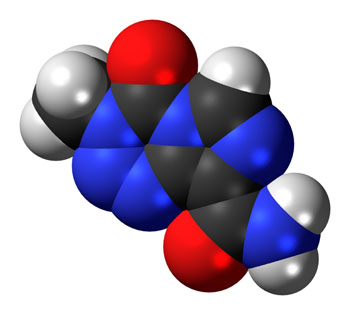Cancer researchers have linked development of resistance to the anticancer drug temozolomide by glioblastoma multiforme (GBM) brain cancer cells to the activity of the RhoG-specific guanine nucleotide exchange factor protein SGEF.
GBM is the highest grade and most common form of primary adult brain tumors. Despite surgical removal followed by concomitant radiation and chemotherapy with the alkylating agent temozolomide (TMZ), GBM tumors develop treatment resistance and ultimately recur. Impaired response to treatment occurs rapidly, conferring a median survival of just fifteen months. Thus, researchers are seeking to identify the genetic and signaling mechanisms that promote tumor resistance in order to develop targeted therapies to combat this refractory disease.
The therapeutic benefit of TMZ depends on its ability to alkylate/methylate DNA, which most often occurs at the N-7 or O-6 positions of guanine residues. This methylation damages the DNA and triggers the death of tumor cells. However, some tumor cells are able to repair this type of DNA damage, and therefore diminish the therapeutic efficacy of TMZ, by expressing the protein O6-alkylguanine DNA alkyltransferase (AGT) encoded in humans by the O-6-methylguanine-DNA methyltransferase (MGMT) gene. In some tumors, epigenetic silencing of the MGMT gene prevents the synthesis of this enzyme, and as a consequence such tumors are more sensitive to killing by TMZ. Conversely, the presence of AGT protein in brain tumors predicts poor response to TMZ and these patients receive little benefit from chemotherapy with this drug.
Previous studies have shown that SGEF (Src homology 3 domain-containing guanine nucleotide exchange factor) was overexpressed in GBM tumors and played a role in promoting TWEAK-Fn14–mediated glioma invasion. TWEAK is a multifunctional cytokine that controls many cellular activities including proliferation, migration, differentiation, apoptosis, angiogenesis, and inflammation. TWEAK acts by binding to Fn14, a highly inducible cell-surface receptor that is linked to several intracellular signaling pathways, including the nuclear factor-kappaB (NF-kappaB) pathway. The TWEAK–Fn14 axis normally regulates various physiological processes; in particular it seems to play an important, beneficial role in tissue repair following acute injury. Furthermore, recent studies have indicated that TWEAK–Fn14 axis signaling may contribute to cancer, chronic autoimmune diseases, and acute ischemic stroke.
Investigators at The Translational Genomics Research Institute (Phoenix, AZ, USA) reported in the January 13, 2016, online edition of the journal Molecular Cancer Research that SGEF expression was upregulated by TWEAK-Fn14 signaling via NF-kappaB activity while shRNA (short hairpin RNA)-mediated reduction of SGEF expression sensitized glioma cells to temozolomide-induced apoptosis and suppressed colony formation following temozolomide treatment.
Nuclear SGEF was activated following temozolomide exposure and formed complexes with the DNA damage repair protein BRCA1 (breast cancer 1), which enabled tumor cells to rapidly repair the damaged DNA that otherwise would lead to cell death. In contrast, BRCA1 phosphorylation in response to temozolomide treatment was hindered by inhibition of SGEF.
“We need to identify the genetic and cellular-pathway signaling mechanisms that make brain tumors resistant to treatment,” said senior author Dr. Nhan Tran, head of the central nervous system tumor research laboratory at The Translational Genomics Research Institute. “And the role of SGEF in promoting chemotherapeutic resistance highlights this previously unappreciated protein. Importantly, this also suggests that SGEF could be a new candidate for development of targeted therapeutics.”







